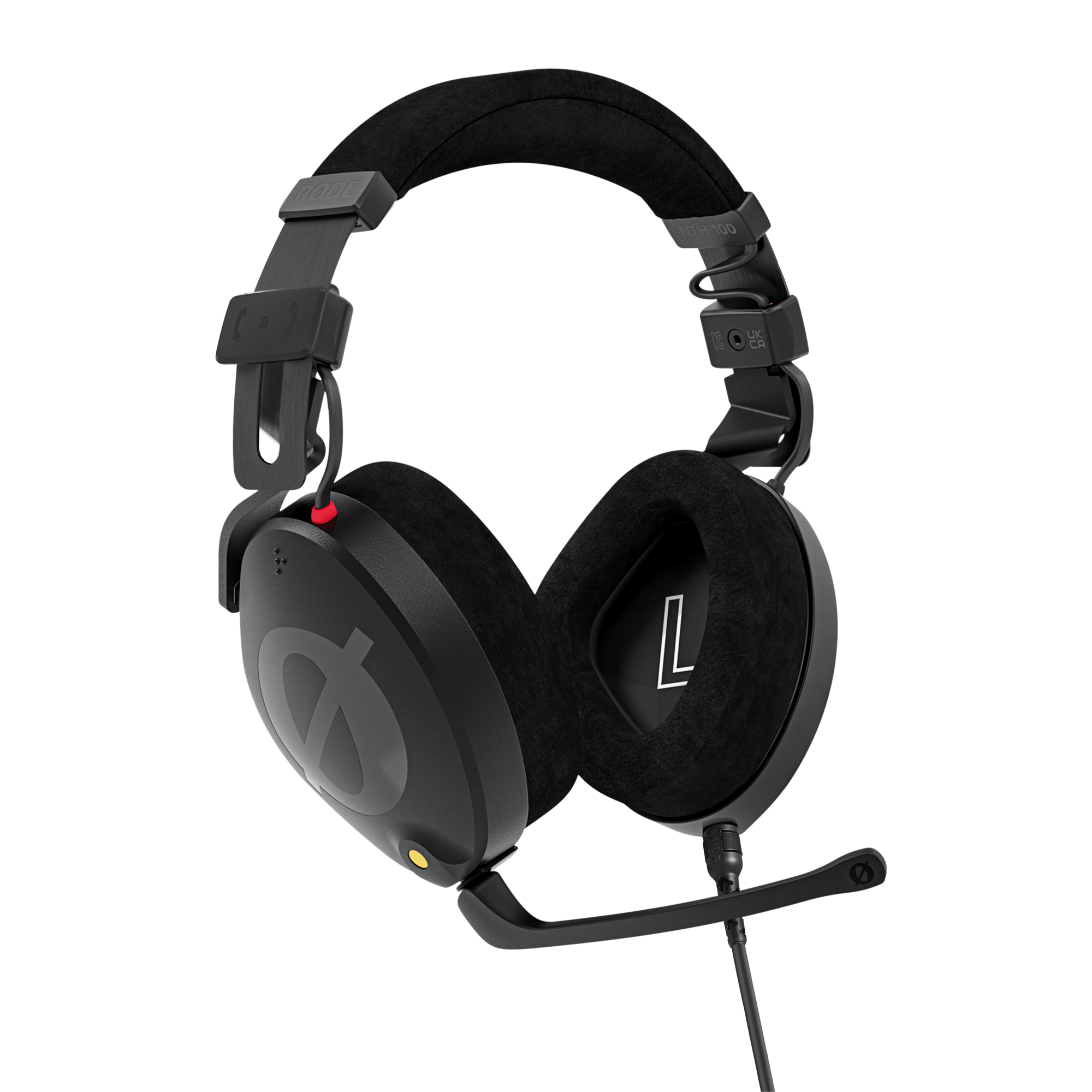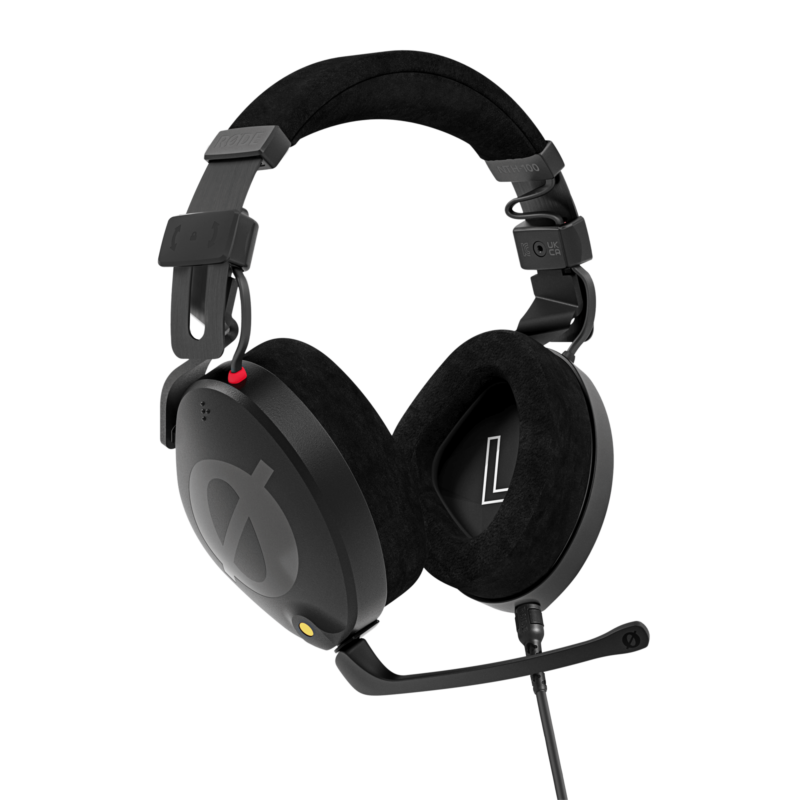
Almost a year ago, I reviewed the RØDE NTH-100 isolating studio headphones. I had a great time explaining the differences between its high-end Elcantara fabric (without any accent mark) and Alcántara (with an accent mark), which is a surname, a municipality in Spain and part of the name of a space center in Brazil. I recapped those things in the test recordings you’ll hear. Although I received it many weeks ago under non-disclosure, today is the day that RØDE lifted the embargo on the headset version, which includes the natural sounding and very comfortable NTH-100 headphones, a plugin microphone called the NTH-Mic (which is available for those who already own the NTH-100 headphones) and accessories. I was astounded with how good the test recordings I made. I say that because of the general voice quality, plosive rejection without any extra fuss and the natural breathing. All three have been major challenges with most other head microphones available before now.
In this article
- Link to my original review of the NTH-100 headphones
- General advantages of a head mounted mic over a standard studio mic
- General disadvantages of a head mounted mic over a standard studio mic (at least before now)
- General advantages of a head mounted mic over a lavalier
- Official specifications
- What comes in the box
- Test recordings, including a comparison with a dynamic studio microphone
Link to my original review of the NTH-100 headphones
General advantages of a head mounted mic over a standard studio mic
- With a head mounted mic, you can completely eliminate several accessories which are generally required with a standard studio mic: a boom arm/stand and a shock mount.
- In the case of a headset (which includes both a microphone and an earpiece as in the case of the NTH-100M), a separate isolating headset is also eliminated.
- With a head mounted mic, the user’s mic technique is alleviated since the distance between the microphone and the mouth of the individual speaking stays constant even when the individual moves around.
- Visually, a head mounted mic is sometimes preferred over a very prominent studio mic for a television show. This point is a question of personal taste (since some TV shows do have a prominent studio mic and others don’t), and this aesthetic decision is not applicable to a radio show.
- To send to a remote guest or co-host who is not tech savvy.
General disadvantages of a head mounted mic over a standard studio mic (at least before now)
The sound quality of most head mounted microphones I have ever reviewed (at least before now) has never been as good as a standard studio microphone used with proper mic technique. With the NTH-100M, the quality of the included NTH-Mic may be the closest I have ever found to date.
General advantages of a head mounted mic over a lavalier
- Because a head mounted microphone with a boom is placed much closer to the mouth, it naturally has a much higher signal-to-room noise ratio than a lavalier placed on the speaker’s clothing.
- The above observation also means that (in the case of multiple head mounted mics in a single studio), there will be more isolation and therefore less crosstalk/bleed between microphones than with multiple lavalier microphones in the same studio.
- A head mounted microphone is generally much less susceptible to mechanical noises when the individual moves around while seated, when slapping the chest to express emotion, when walking around during a presentation or in the case of an aerobic instructor. However, it is critical to have strain relief on the cable which is connected to the headset or at least to have plenty of slack.
Official specifications
Acoustic & Electrical
Transducer Size – 40 mm
Operating Principle
NTH-100 – Dynamic
NTH-Mic – Permanently polarized
Active Electronics
JFET impedance converter
Polar Pattern – Omnidirectional
Frequency Response
NTH-100 – 5Hz – 35Khz
NTH-Mic – 20Hz – 20kHz
Signal-to-Noise Ratio – 67dB
Equivalent Noise Level (A-Weighted) – 27dBA Typical
Maximum SPL
106dB SPL RMS (Plug-In Power, 1% THD)
123dB SPL RMS (Plug-In Power, 10% THD)
Maximum Output Level – 307mV (@ 1kHz, 10% THD into 1KΩ load)
Headphone impedance – 32Ω
Sensitivity
NTH-100 – 110dB/V
NTH-Mic – 38dB re 1 Volt/Pascal (12.59 mV @ 94 dB SPL) +/- 3 dB @ 1kHz
Maximum Input Power – 1700mW, 1% THD @ 1kHz
Ear Coupling – Circumaural
Ambient Noise Attenuation
20dBA
Connection Type
NTH-100 – Dual TRRS Cable Attachments
NTH-Mic – 3.5mm bayonet jack (for NTH-100)
Dynamic Range – 92dB @ max input
Mechanical
Dimensions (millimeters)
NTH-100 – Length: 80 Width: 190 Height: 188
NTH-Mic – Length: 123 Height: 40 Depth: 17
Weight (grams)
NTH-100 – 350
NTH-Mic – 5
Cable Length (millimeters) 2400
What comes in the box

Test recordings
Audio PlayerIsolated simultaneous recording of the NTH-Mic mounted onto the NTH-100 headphones, flat (no processing other than normalization)
Audio Player
Isolated simultaneous recording of the NTH-Mic mounted onto the NTH-100 headphones, with mild noise reduction from Hindenburg Pro)
Audio Player
Isolated simultaneous recording of the SL-40 from FDUCE, flat (no processing other than normalization)
Audio Player
Isolated simultaneous recording of the SL-40 from FDUCE, with mild noise reduction from Hindenburg Pro)
Conclusions
I was astounded with how good the test recordings I made with the NTH-100M and NTH-Mic. I say that because of the general voice quality, plosive rejection without any extra fuss and the natural breathing. All three have been major challenges with most other head microphones available before now. Together with the natural, flat and comfort of the NTH-100, it makes a great combination. The NTH-100M and NTH-Mic are shipping worldwide now. The NTH-100M headset combo is available for U$189 and the NTH-Mic (for prior owners of the NTH-100) is available for U$59. To find out more, visit rode.com/nth-100m.
(Re-)Subscribe for upcoming articles, reviews, radio shows, books and seminars/webinars
Stand by for upcoming articles, reviews, books and courses by subscribing to my bulletins.
In English:
- Email bulletins, bulletins.AllanTepper.com
- In Telegram, t.me/TecnoTurBulletins
- Twitter (bilingual), AllanLTepper
En castellano:
- Boletines por correo electrónico, boletines.AllanTepper.com
- En Telegram, t.me/boletinesdeAllan
- Twitter (bilingüe), AllanLTepper
Most of my current books are at books.AllanTepper.com, and also visit AllanTepper.com and radio.AllanTepper.com.
FTC disclosure
RØDE is not paying for this article. Some manufacturers listed above have sent Allan Tépper review units, including RØDE and FDUCE. Some of the manufacturers listed above have contracted Tépper and/or TecnoTur LLC to carry out consulting and/or translations/localizations/transcreations. So far, none of the manufacturers listed above is/are sponsors of the TecnoTur, BeyondPodcasting, CapicúaFM or TuSaludSecreta programs, although they are welcome to do so, and some are, may be (or may have been) sponsors of ProVideo Coalition magazine. Some links to third parties listed in this article and/or on this web page may indirectly benefit TecnoTur LLC via affiliate programs. Allan Tépper’s opinions are his own. Allan Tépper is not liable for misuse or misunderstanding of information he shares.

Filmtools
Filmmakers go-to destination for pre-production, production & post production equipment!
Shop Now












